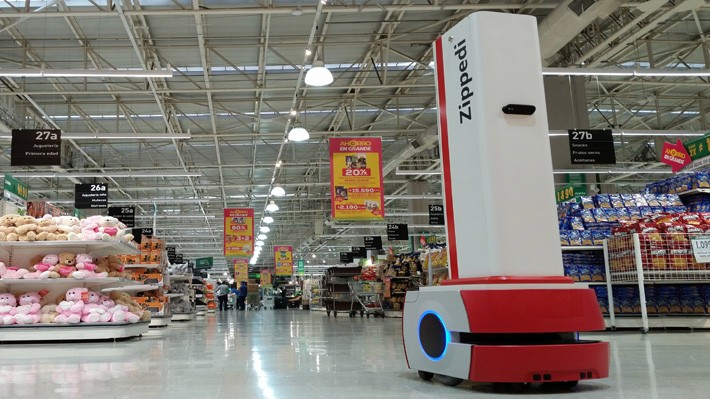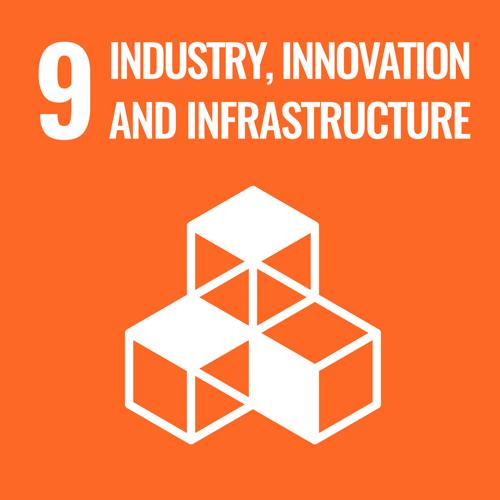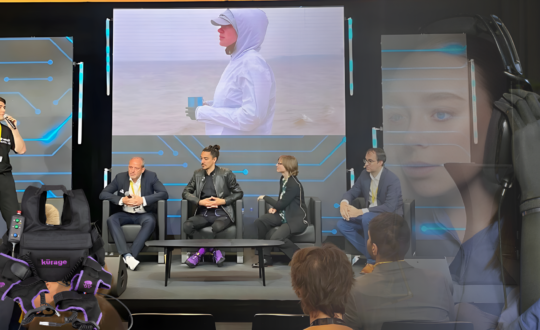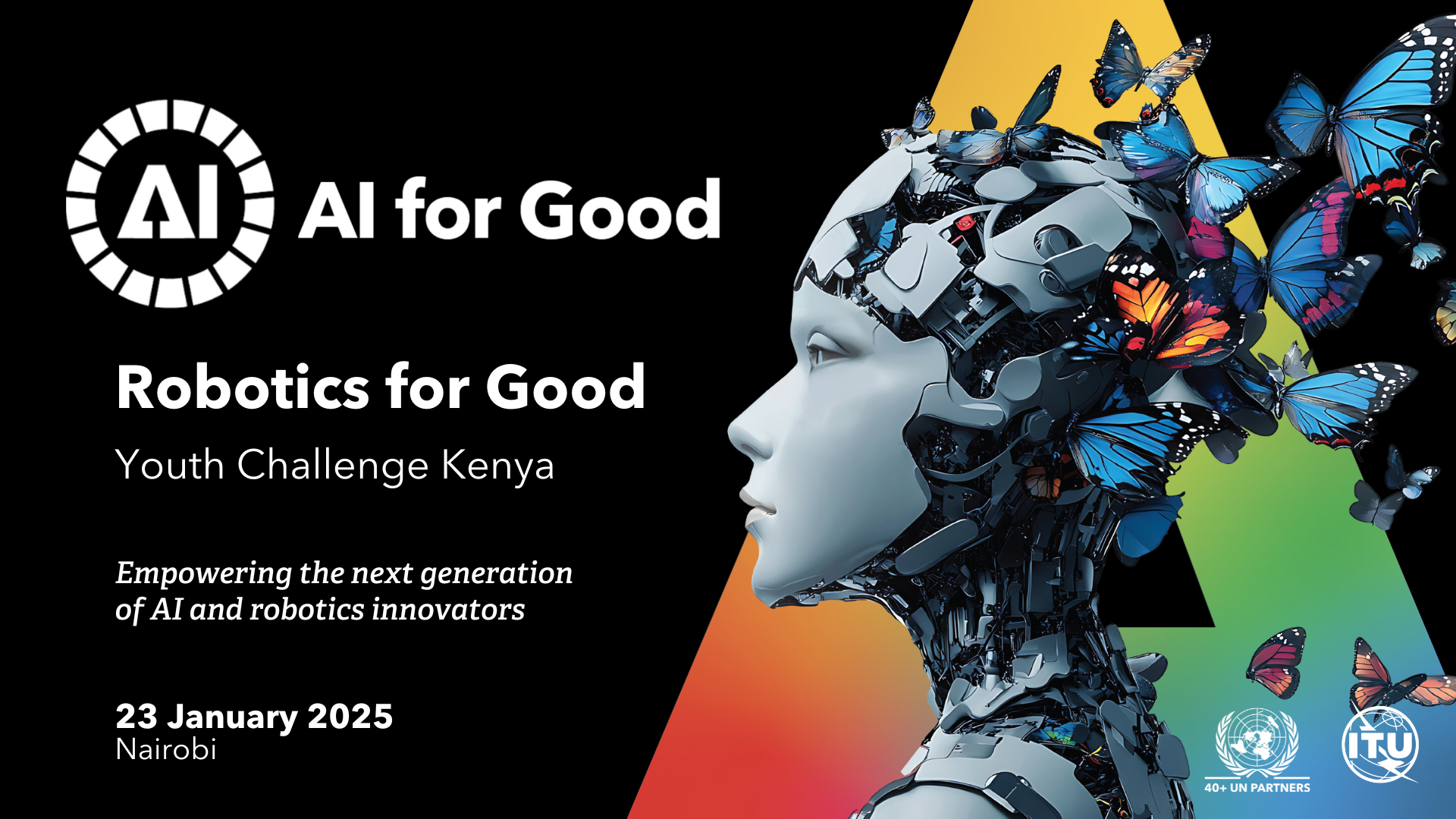The retail sector is on the verge of an exhilarating transformation, driven by rapid progress in artificial intelligence (AI) and robotics. The insightful webinar, “A New Era for Retail with Intelligent Robots,” brought together experts from diverse fields to explore the potential consequences of these revolutionary innovations for the retail industry.
Co-Founder and Lead Robotics Engineer Diana Baicu from Adapta Robotics discussed the evolution of retail and the role of intelligent robots in enhancing retail operations. She provided an overview of the retail landscape and its transformation over time. She explained how the pandemic accelerated the shift to online shopping, with a 40% increase in usage worldwide in 2020. However, she noted that brick-and-mortar stores have remained relevant as consumers seek in-person experiences.
Diana emphasized the importance of an omnichannel approach in retail, which can lead to challenges in maintaining consistency across various platforms. She explained how in-store operational robots can help retailers overcome these challenges, offering examples of tasks they can perform, such as price checking, inventory scanning, and planogram compliance.
Discussing the technical aspects of robotics in retail, Diana mentioned a vision system that processes a large amount of data using AI and neural networks. She highlighted the importance of ensuring employee well-being and shared that in tests, robot-assisted scanning was 15 times faster than manual scanning.
Diana drew parallels between the transition from counter service to self-service in retail and the shift from manual labor to robot operations. She argued that the use of robots in retail would lead to better customer experiences and more efficient, fulfilling roles for employees, saying, “it’s the same here; the roles change, and the jobs become better and better, but at the same time, the customers are better served because they are easier and simpler, faster to be served by those employees who have more time at hand.”
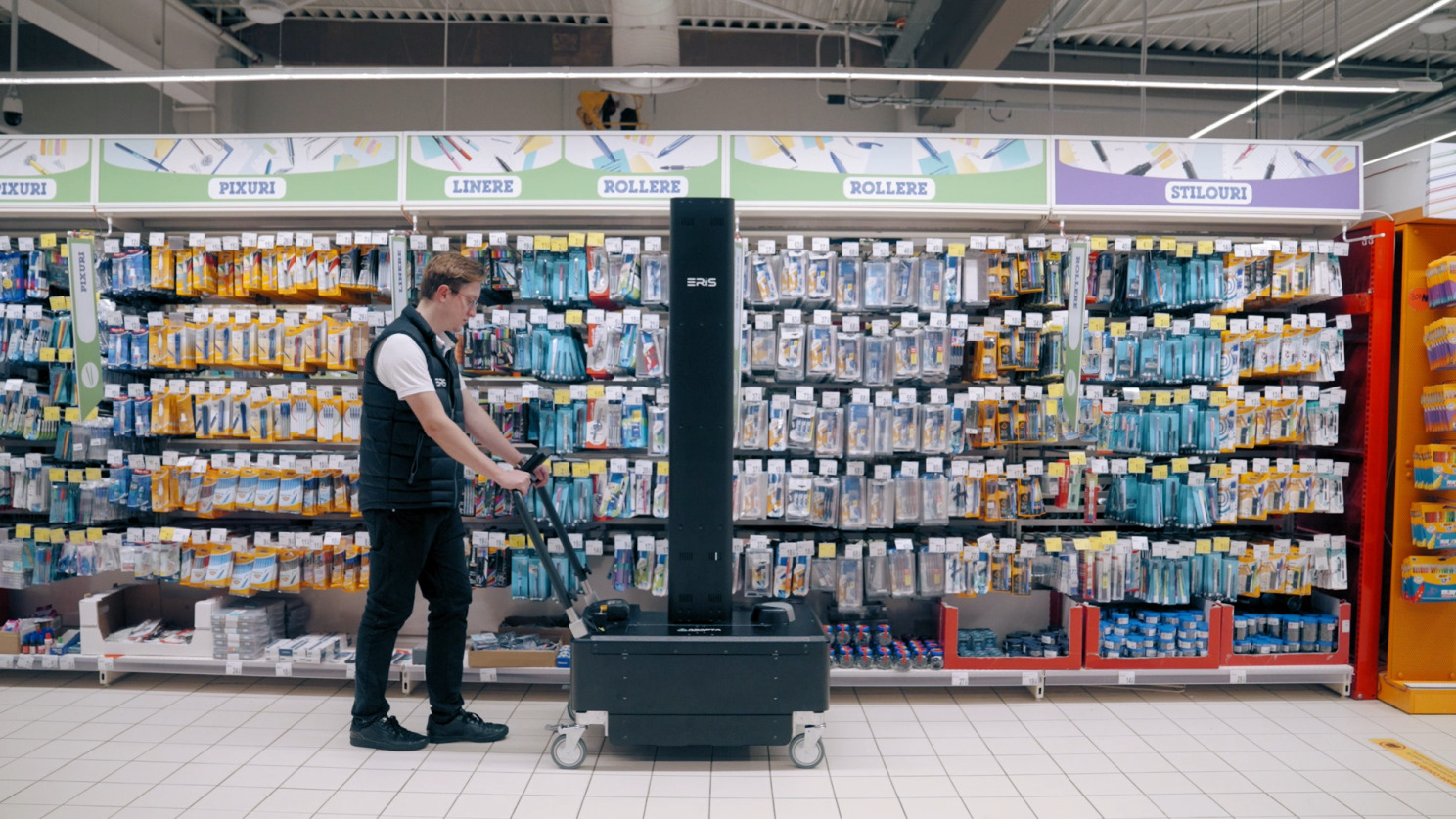
Image Credit: Robot Eris by Adapta Robotics
Data has shown that there are over 50 billion physical products being managed per day. Ariel Schilkrut, Co-Founder of Zippedi, presented the introduction of AI and robotics as the solution to various problems such as out-of-stock, planogram non-compliance, pricing problems, high labor costs, promotion non-compliance, and missing assortment, which amounts to $1 trillion, not accounting for general annual losses.
“I think that will allow customers and management to interact with the data in ways that are going to be very revolutionary” said Ariel.
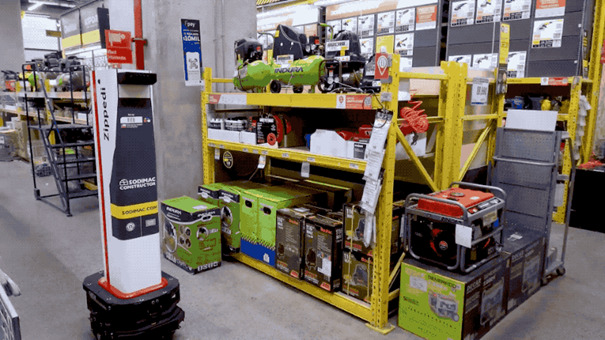
Robot Zippedi – Image Credit: TechCrunch
Ariel introduced Zippedi, an autonomous robot designed to help improve productivity, currently accounting for over 200 robots released in the US, Latin America, Australia, and Europe. Zippedi’s 3D vision, camera, and inventory capabilities are just the tip of the iceberg of what this autonomous retail robot can do to help improve productivity. Indeed, Zippedi was said to travel over 300,000 kilometers and scan over 3 billion labels per year. Zippedi thus enables through gathering data to improve the store’s productivity, inform retailers and managers by capturing images of the shelves and, using computer vision algorithms, can identify gaps, misplaced items, or products lacking price tags. The escalating demand for automation, particularly in sectors like retail where repetitive tasks are common, didn’t stop at Zippity, a robot engineered to enhance shelf maintenance and streamline inventory management.
Kosmas Karadimitriou, Director of Data Insights in the Robotics Division at Shopify, argued that the “best application is collaborative robotics,” explaining that humans and robots respectively can achieve certain tasks which, together, can yield better results. The speaker progressed, highlighting that the future of automation and intelligence will be incorporated within our daily lives, from virtual bots on our technological devices to physical robots within warehouses, supermarkets, our city streets, and even our homes.
“We will see millions of AIs all around us” said Kosmas.
Kosmas Karadmitriou also explored the impact of large language models (LLMs) on retail, praising their ability to “simultaneously interact with 10 million, 100 million users, and conduct 100 million concurrent discussions.” He proposed that, as these models become more accessible, they could be incorporated into individual robots, effectively rendering each robot “90% of human intelligence.”

Credit: Parti Research Google
The idea of productivity increase is tied to the implementation of AI, where intelligent assistance will impact productivity and alter the “nature of our jobs” by making them more managerial, wherein a task will be assigned by a human to a robot.
However, this view was pointed out as being optimistic by Myrna Macgregor, who highlighted the importance of “pulling together our responsible AI and Robotics commitments.”
In addressing the responsible segment of AI, Myrna Macgregor, Principal Data Strategist and Lead for Responsible AI & Robotics at Ocado Technology, highlighted that AI systems can be opaque and dynamic, requiring special attention. She mentioned the importance of responsible design and explicability as key elements to gaining user trust and ensuring that their deployment is done in a fair manner. Myrna mentioned five elements as being part of Ocado’s responsible AI and Robotics commitments: fairness, transparency and explicability, governance, robustness and safety, and impact.

The Hive by Ocado Technology – Image Credit: CNN
The experts acknowledged the difficulties in implementing responsible AI practices throughout organizations. Myrna Macgregor suggested that it’s vital to encourage teams to consider responsible AI, while also ensuring they report and record information centrally. She also recommended incorporating responsible AI practices into existing organizational workflows to prevent additional hurdles.
As AI-powered robots become increasingly prevalent in retail settings, it’s essential to guarantee they complement and support human workers, resulting in more efficient and enjoyable retail experiences for employees and customers alike.
As we approach a new era in retail, where AI-driven robots become indispensable to our shopping experiences, it’s crucial to consider the ramifications of this technological revolution. We invite you to contemplate the following question: How do you foresee AI-driven robots affecting the retail industry, and what role should they play in shaping the future of shopping? The integration of AI and robotics in retail presents a unique opportunity for reshaping the industry, optimizing operations, and creating a more seamless shopping experience for customers. By considering the ethical, practical, and collaborative aspects of these advanced technologies, we can harness their potential while preserving a harmonious balance between human workers and AI-driven robots.




